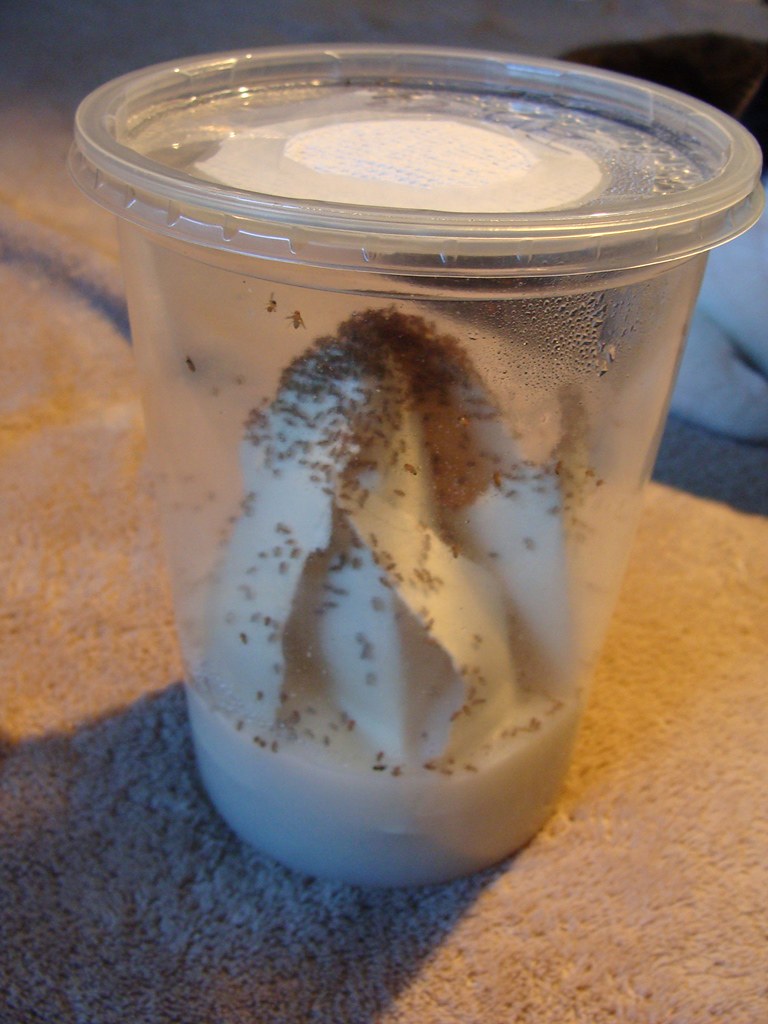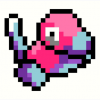Termites
(Easy, but patience is required)
There are 2 main types of termites, damp wood and dry wood. Both require slightly different care.
Dampwood Termites: (this also works for subterranean termites)
The materials
A medium and small sterlite type container - the small container needs to fit easily inside of the larger.
Two or more thin bricks.
Unbleached, brown paper toweling (the cheap kind you find at gas stations and in the office bathroom).
Large Popsicle or craft sticks
Vermiculite – can substitute with soil or peat
Softwood board
Stack the wood so that it is a square with a hole in the centre. Best way is to do 3 layers, 2 big ones for the top and bottom, with 2 smaller pieces in between. If possible cut, chisel, or scrape gouges/grooves into the underside of the top layer. This will allow termite to hang out here for easier collection. They only need about 1/8” to easily maneuver.
Soak the wood in water for a day so it is damp, along with some popsicle sticks.
Stuff the hole with damp paper towel. Termites love damp locations. This is the only part you will water. As they eat it, replace it. Water it as often as needed to keep it damp.
Put the stack at one end of the smaller container and add a thin layer of vermiculite. Layer the wet popsicle sticks on top of the vermiculite. Then add another light (and patchy) payer of damp vermiculite over the popsicle sticks.
Add your termites.
Place the tow bricks in the larger container and put your small container on top of them. You will now create a moat. Add a couple inches of water in the large container.
Termites need about 100% RH to thrive, this will help maintain this.
Second, this will prevent escapees. They love to build dirt tubes up the sides of the container.
If they consume most of the wood, add more popsicle sticks or wood pieces.
Warning: many cardboards are treated with glues that slowly kill termites, please avoid using cardboard.
The interesting part about dampwood termites is that if you collect a number of workers, they will develop into secondary reproductive and lay eggs. It does take time, so ensure you collect a larger number of termites if possible.
Remember that top wood piece above the damp paper towel? If you lift it, there should be termites clinging to the underside of it – easy to shake into an outworld.
Dry wood termites:
http://forum.formicu...ny/?hl=termites
These are slower growing than dampwood termites.
You will need a large glass jar and 1” wide wood dowels cut into 3-4” sections.
Place 3-4 wood dowels in the jar and add the termites.
They will eventually eat the edible parts of the dowel and move on to the next one. Keep adding more dowels.
Once the jar is full of dowels, get a slightly larger jar.
Move each dowel to the new jar – let the top ones go the bottom.
Many of the bottom ones should be hollow with no one home – as they are hollow they are easily broken open to check.



















